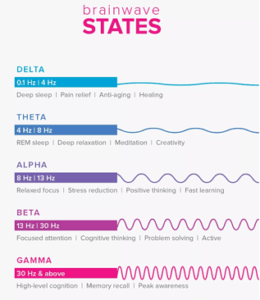
Binaural Beats: Every School’s New Secret weapon?

I first found binaural (pronounced bi-nor-el) beats when I was searching for home remedies for a condition I have called Trigeminal Neuralgia TN2. It’s a condition that causes severe facial pain stemming from an irritation to the trigeminal nerve. The pain can be sudden, and ache for days without relief. Thankfully in my case, TN2 is less intense than the more common TN1, meaning that it’s a burning ache versus a powerful, instant shock. Conventional treatments didn’t seem to be working and since there is no cure, I decided to do a bit of research. That’s when I found binaural beats.
What Are Binaural Beats?
Discovered in 1839 by Prussian meteorologist Heinrich Wilhelm Dove, a binaural beat is when a listener hears a different frequency lower than 1000 Hz between the left and right ears. Originally discovered by accident, when Dove was conducting experiments for his Meteorological research, these frequency beats have become the subject of much debate since the 1970s.
It’s like your ears are listening between the lines. An example of this is if you were listening to one frequency at 300 Hz in your left ear and then 310 Hz in your right ear, the binaural beat would be the difference between the two – 10 Hz. These beats can be used to treat a myriad of afflictions and can contribute to pain relief, focused attention, positive thinking, meditation, creativity, and memory recall to name a few. They are broken down into 5 main categories: Delta, Theta, Alpha, Beta, Gamma. While I use Delta frequencies to help relieve the pain from my TN2, each frequency can be used for so much more.
Why Should Binaural Beats Matter to Schools?
It can be tough to watch children struggle with academic, social, or behavioral issues. So many students struggle in school because they suffer from various anxieties and learning disabilities. Not every child grappling with these issues is the same, but there are steps that can be taken to decrease their anxiety and increase their cognitive function… and binaural beats are a great place to start.
Let’s take Test Anxiety as an example. A student struggling with test anxiety may freeze up and forget everything they studied when they sit down to take an exam. By turning on an Alpha, Beta, or Gamma binaural beat in the classroom, the frequencies can act as a calming mechanism, helping the anxious student take a deep breath, and focus better. All of these frequencies can be found on YouTube. But, if playing a single frequency on a speaker seems a bit too much, YouTube also offers a selection of calming music that has the frequencies mixed in. For the best results, try playing them periodically over the course of a few weeks for 30 minutes a day, a couple of times a week, and see what kind of improvements stem from that. If all goes well, bump it up to every day.
The Science Behind Binaural Beats
Even though Binaural Beats have been around since the 1830s, they are still relatively new to the health world. While some smaller research studies substantiate claims that these beats decrease stress and improve cognitive ability in listeners, there is still more research to be done. Many believe that there isn’t much difference between the effect music has on people and the effect of binaural beats. However, most agree that no harm comes from listening to the beats and there are some small benefits to the brain function.

